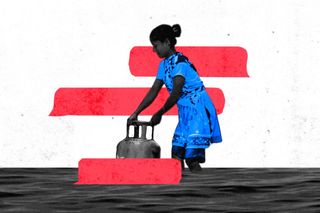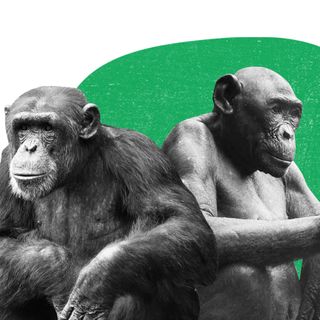
Research Shows How Online Hate Speech Rises With Heatwaves, Extreme Weather
Online hate speech functions as a “new impact channel through which climate change can affect overall societal cohesion and people’s mental health.”

The climate crisis is a story framed in numbers: the planet is changing in unprecedented ways as we surpass all tipping points of redemption. But as glaciers melt and heat waves turn maps red and orange, there is another disconcerting social shift playing out. Extreme weather events may also be influencing the already staggering levels of hate speech that the internet is awash with.
To put it simply, the climate crisis may be impacting instances of hate and online aggression more than we realize. According to a recent study, heat waves and extreme colds have the potential to reorient our individual behaviors, making people impatient and hostile online.
“For centuries, researchers have grappled with the question of how climate conditions affect human behavior and societal stability. Now, with ongoing climate change, it is more important than ever,” wrote Leonie Wenz, working group leader at the Potsdam Institute who led the study. Wenz, along with other researchers, looked at an understudied trial: the climate crisis, mental health, and online hate speech. Their work was published in the journal The Lancet Planetary Healthlast week, documenting the fluctuations in online hate with the severity of a human-made crisis.
“Our results highlight online hate speech as a new impact channel through which climate change can affect overall societal cohesion and people’s mental health,” Wenz noted, and that “hate expressed online could increase under future global warming.”
The crisis had already begun to rupture an individual and collective emotional well-being. Extreme weather events are begetting a form of “eco-anxiety,” as people feel grief and helplessness and anxiety over the loss of their homes. This is in addition to research illustrating the impact of extreme weather events — like rising temperature — on gender-based violence and conflict in the real world. At the same time, we know online hate speech with its incremental rise against people from marginalized identities is also extracting a mental health burden from the same community. Think of this as a Venn diagram. The three circles of mental health, climate crisis, and online hate speech overlap to signal a triple bind for people from marginalized locations.
In their study, the researchers looked at four billion geolocated tweets posted from across 773 U.S. cities between 2014 and 2020. There is a certain “Goldilocks zone” of human thermal comfort — one which is not too toasty or not too cold — that decides our mood, physical comfort, and behavior. For the purpose of their research, the scientists zoomed in on the bracket of 12-21°C as the feel-good zone. On extremely cold days, when the temperatures ranged from -6ºC to -3ºC, hate tweets were found to have increased by 12.5%. On the other hand, when temperatures rose to somewhere between 42ºC to 45ºC (which was most of India in June this year), hate speech rose by 22% online.
Related on The Swaddle:
What Will Protect People From Hate Crimes in the Metaverse?
The patterns of online hate defied income levels or geography. “Even in high-income areas where people can afford air conditioning and other heat mitigation options, we observe an increase in hate speech on extremely hot days,” said Anders Levermann, co-author of the study.
The data speaks to the limitations of people to adapt to varying temperatures, which are increasingly becoming the norm with the climate crisis. One reason for rising hate tweets is people are accustomed to living in certain temperatures, and misbehavior rises when, let’s say, someone living in a hot-dry region suddenly experiences severe humidity.
The current research wasn’t able to dissect the data to reveal any variations depending on socioeconomic differences, religion, race, or political affiliations — because “cities are never perfectly homogenous,” the researchers argued. In other words, the senders of hate tweets weren’t a homogenous group too. But the receivers of hate were almost perfectly defined: the people who are already vulnerable to hate speech, including LGBTQI+ persons, or Black and Hispanic people in the U.S., are the same group bearing the brunt of weather-related hostility.
More worryingly, hate speech online then stands out as a “potential channel through which temperature alters interpersonal conflict and societal aggression.”
The Bengaluru floods are a good case study of this. The city found itself beleaguered with water — the handiwork of the elite and corporate interests to erect concrete and steel buildings inside valleys and over wetlands. But some sections online rushed to blame migrant workers and poor residents, whose homes in the form of informal infrastructure and slums are underwater. The argument went that they were “outsiders” who didn’t belong in the city, and had no right to critique the capitalistic malarkey that has played out in the form of concretization of land, erasure of natural ecosystems, and profit-making.
Twitter erupted with debasing and inhuman hashtags, hate speech that betrayed both an ignorance and entitlement fed wholly by structural privilege.
The aggression doesn’t fully mask the astonishing reality. “The origins of flood risk are social—inseparable from the history and politics of land and housing,” wrote Malini Ranganathan. “Poorer residents are not only vulnerable to extreme weather, but also continue to be ensnared by a double-edged sword: a nexus between real estate developers, landowners, and various agents of the state. This nexus makes settlement possible for poorer and lower-middle-class groups without access to planned housing; at the same time, it can be exploitative and dangerous… For these residents, [the] risk is a multidimensional and normalized part of their existence.”
This existence then becomes subject to displacement, loss of income and opportunities, poor mental health, and even hate as a crisis engineered due to human greed leaves the city battered.
A hidden impact of the ecological crisis could also be then measured by looking at people’s mental health, and how it changes with growing instances of environmental catastrophes. The researchers concluded “that curbing emissions very rapidly and drastically will not only benefit the outer world. Protecting our climate from excessive global warming is also critical to our mental health.”
The climate crisis is playing out in a new world where people live two lives, online and offline. Here, inequality is reproduced twice: once through structural oppression in the form of poor mental health and lack of access to social welfare, and then again online where people are ostracized and cast away as “outsiders.”
Saumya Kalia is an Associate Editor at The Swaddle. Her journalism and writing explore issues of social justice, digital sub-cultures, media ecosystem, literature, and memory as they cut across socio-cultural periods. You can reach her at @Saumya_Kalia.
Related


How Sharing News Online Makes People Overestimate Their Knowledge of It
